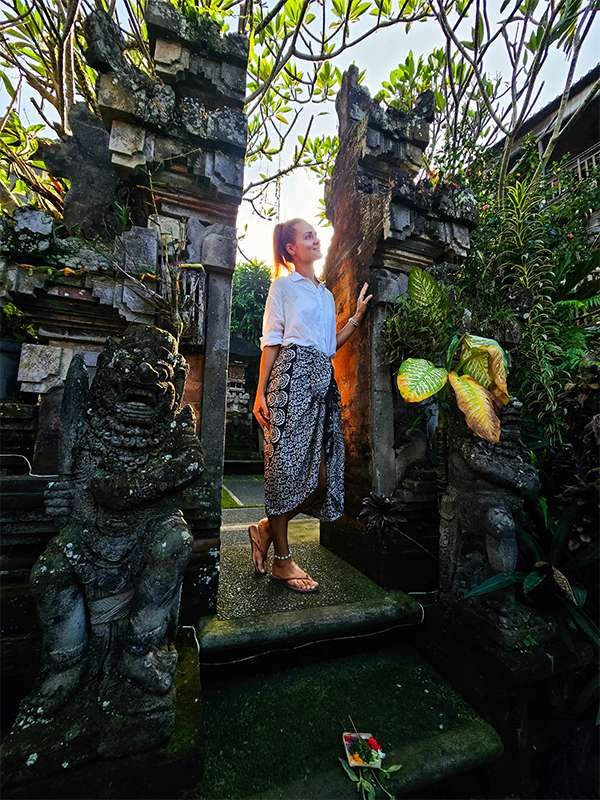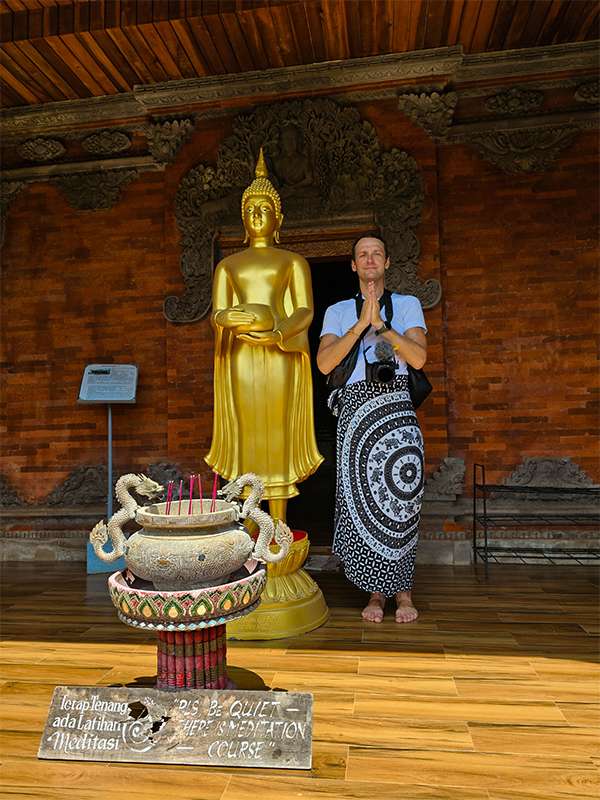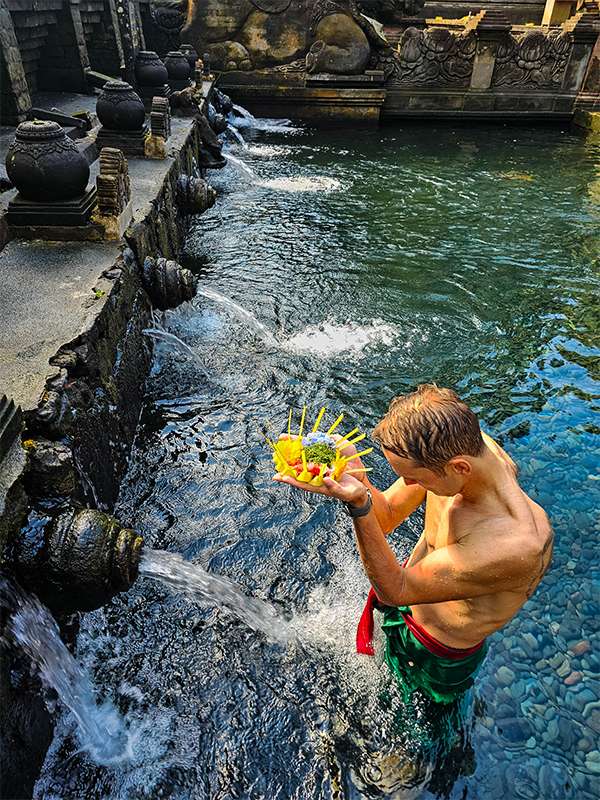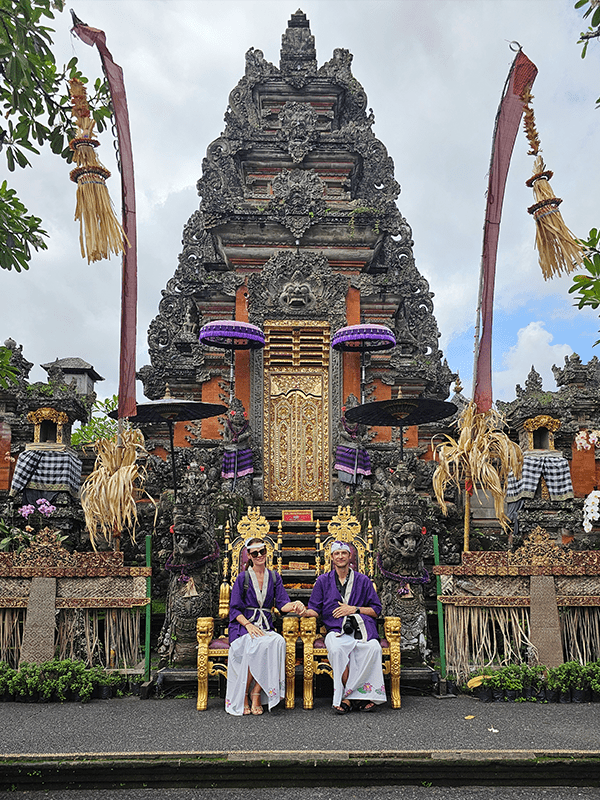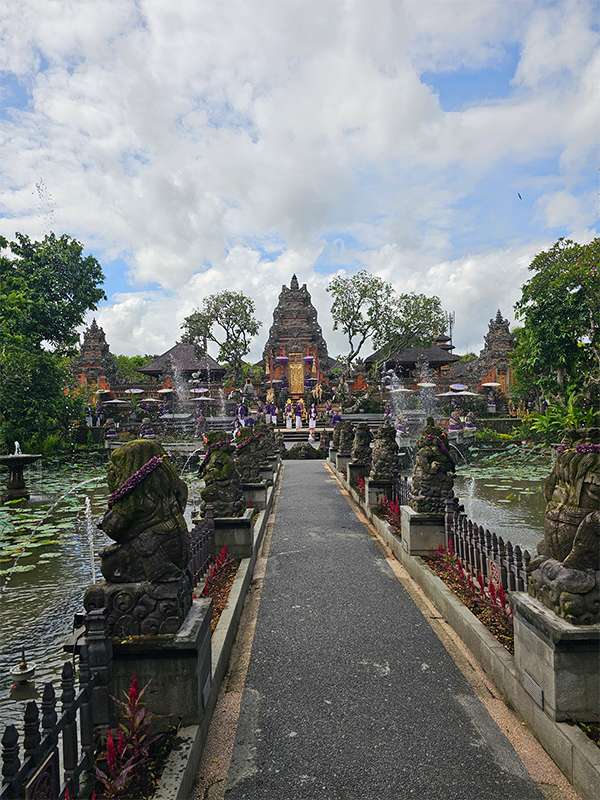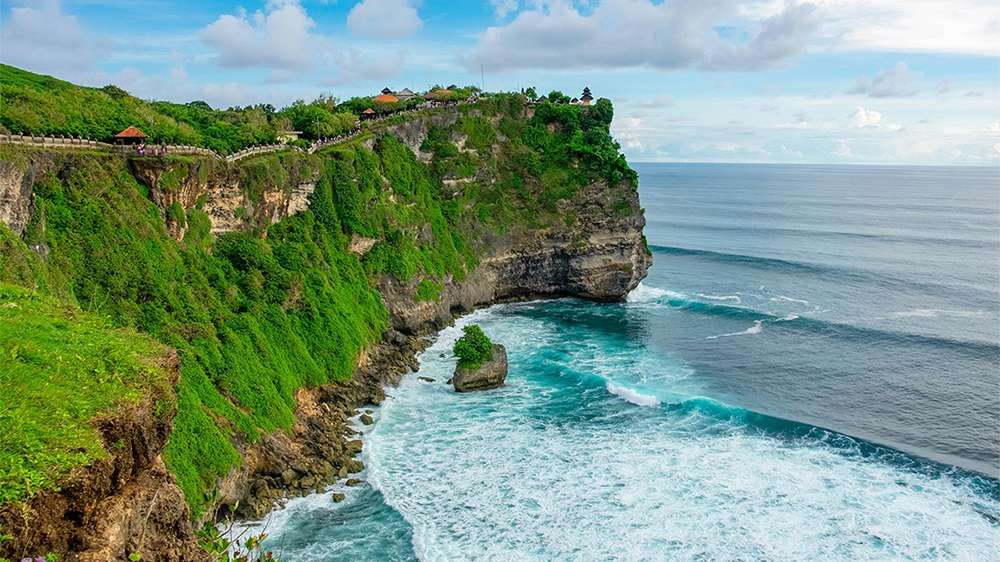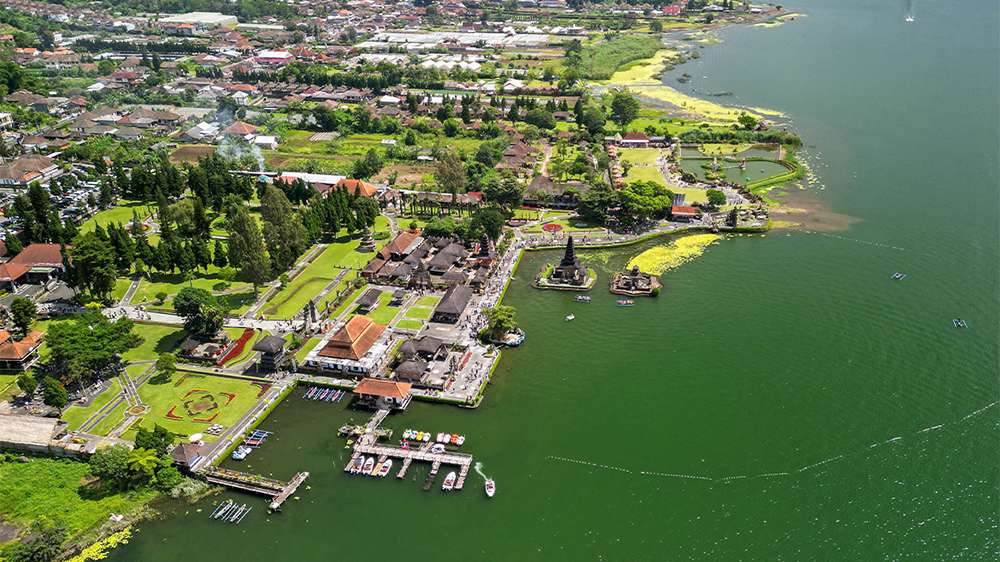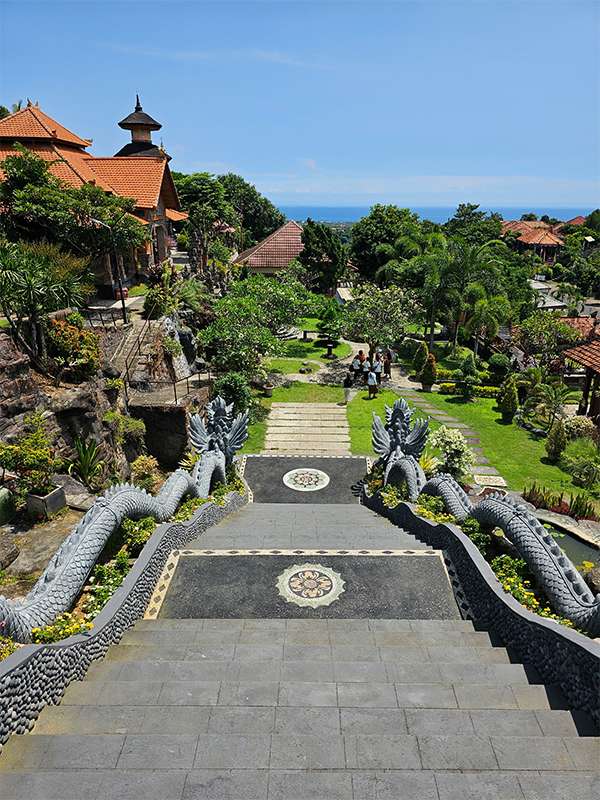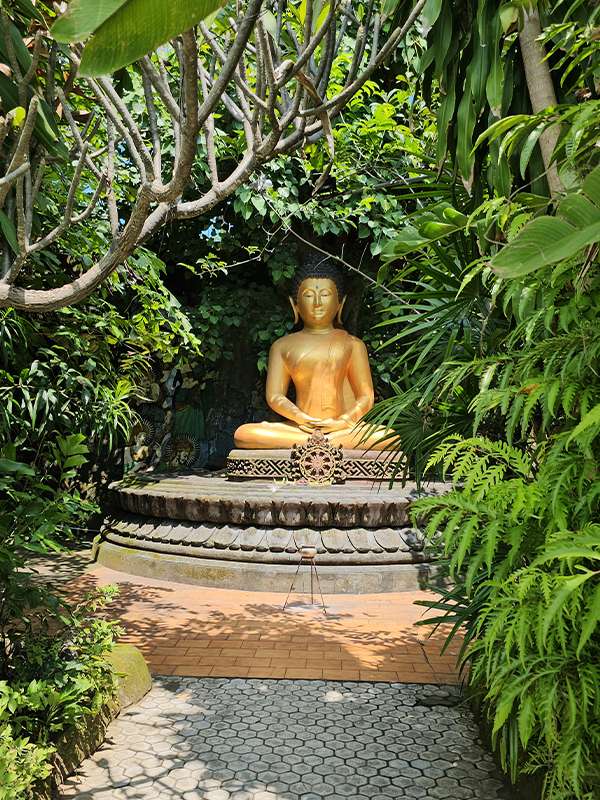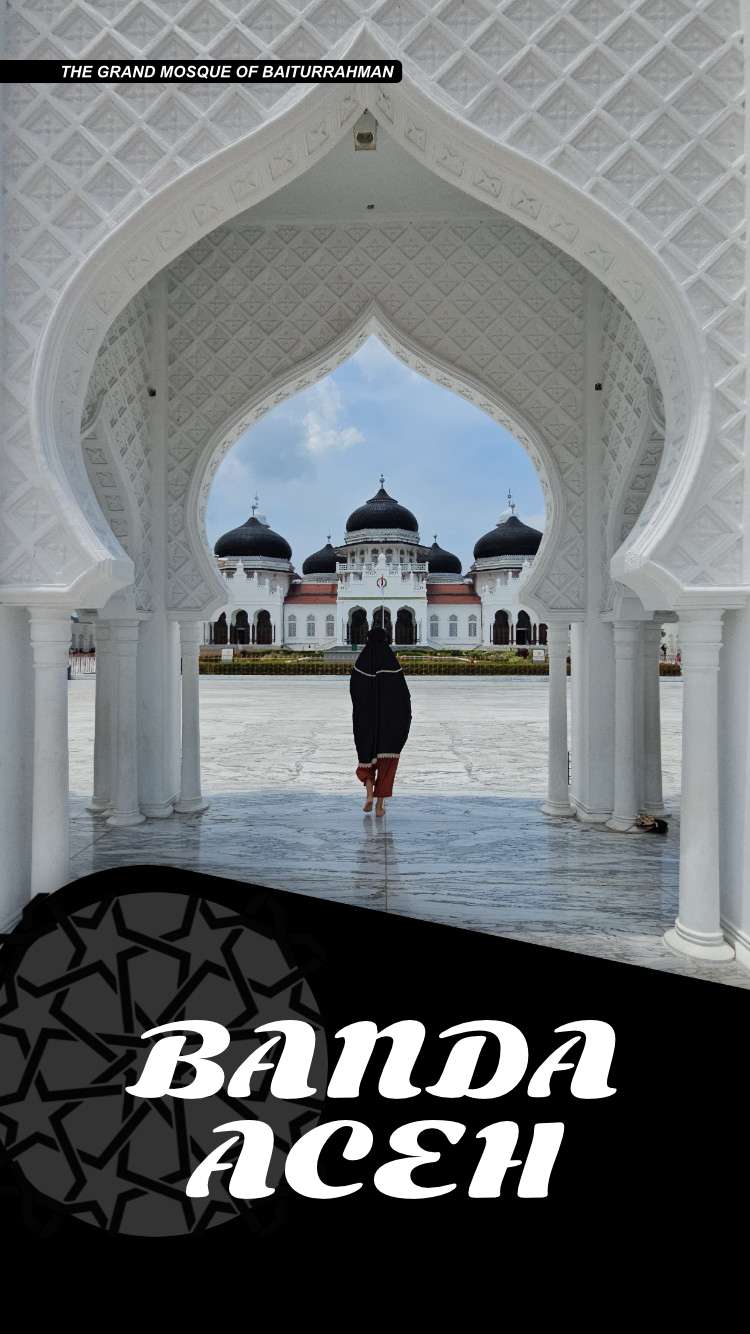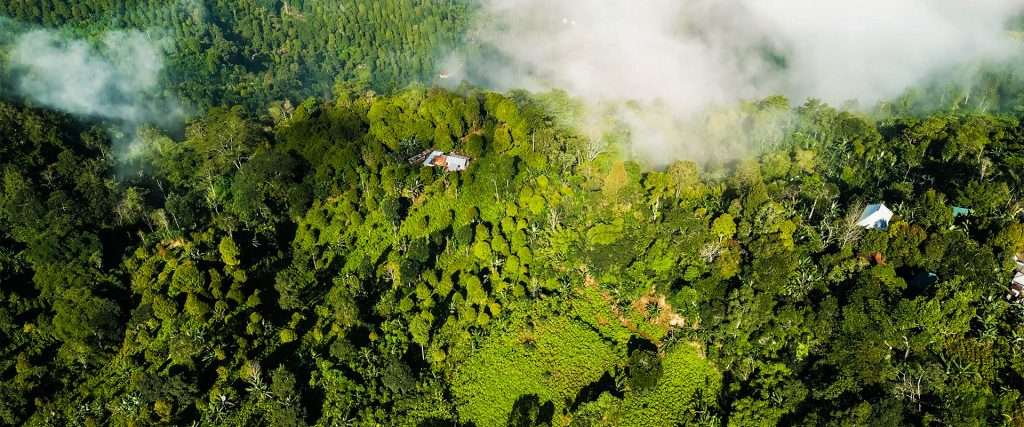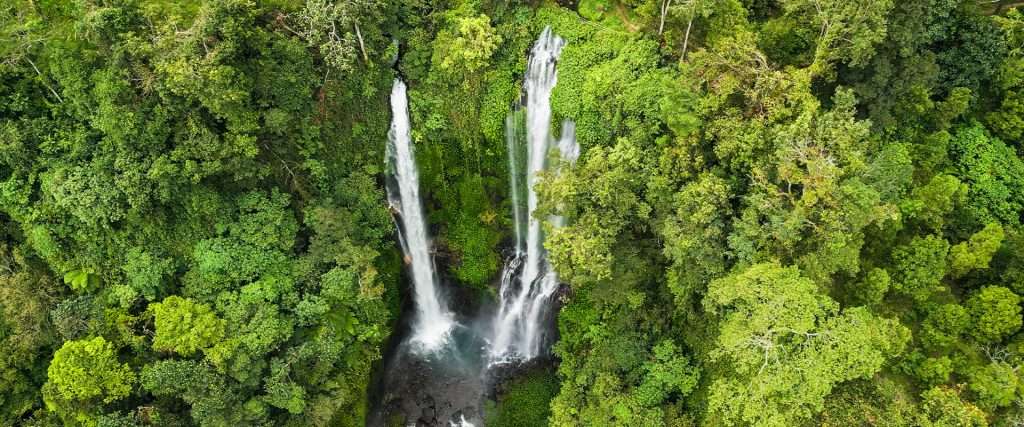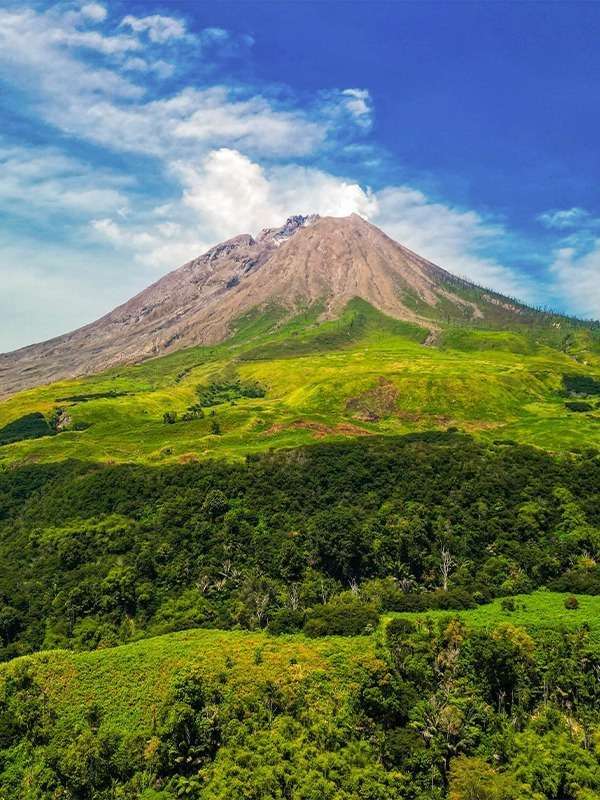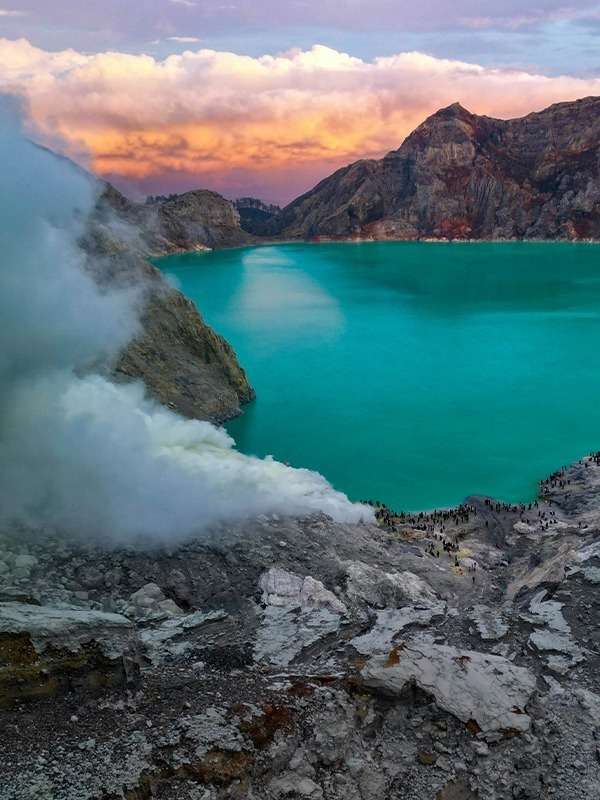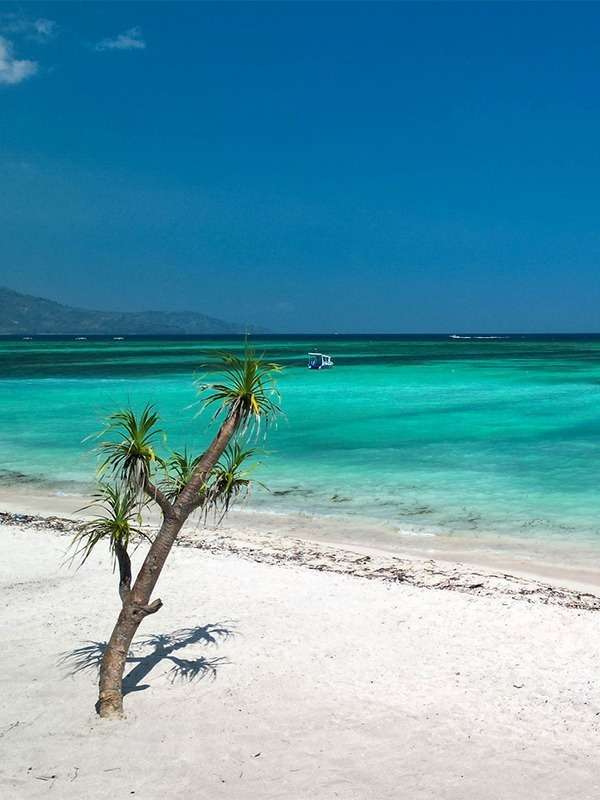Temples in Bali are more than beautiful landmarks; they’re the heart of the island’s spiritual life. Scattered across mountains, lakes, cliffs, and rice fields, each temple carries centuries of tradition and a deep connection to Balinese Hindu culture.
From peaceful water temples to dramatic sea shrines, visiting these sacred sites was one of the most memorable parts of our trip. I still remember the sound of flowing water at Tirta Empul and the way the mist rolled in at Gunung Kawi. Those moments felt both grounding and magical.
What makes Balinese temples so unique is the way they blend nature, art, and spirituality. As you explore, you’ll see intricate stone carvings, daily offerings, and vibrant ceremonies that are still very much alive today.
In this guide, I’ll walk you through the most beautiful temples in Bali. From famous names like Uluwatu Temple and Besakih Temple to hidden gems near Ubud and in the north. Whether you’re chasing views, seeking peace, or learning more about Balinese culture, there’s a temple here waiting to move you.
Did you know?
Bali is home to over 20,000 temples, which is why it’s often called the Island of a Thousand Temples. You’ll spot them everywhere, from grand sea temples perched on cliffs to small shrines tucked into rice fields and family compounds. Ceremonies and offerings are a part of daily life here, giving Bali its unique spiritual atmosphere.
Visiting Tips & Etiquette for Temples in Bali
Visiting temples in Bali is an incredible way to connect with the island’s culture, but it also comes with responsibilities. These are sacred spaces, and showing respect through your actions and appearance is essential.
Dress Code: What to Wear at Temples in Bali
The Bali temple dress code is simple but important: you must wear a sarong around your waist and a sash tied at the hips. Shoulders should also be covered, so bring a light scarf or wear a t-shirt. Many temples offer sarongs at the entrance (sometimes for free, sometimes for rent), but it’s best to carry your own so you’re always prepared.
This applies to both men and women. Even at less popular temples, the same rules apply.
Respectful Behaviour
Inside temples, keep your tone low and your movements calm. Never point your feet toward shrines or statues, because in Balinese culture, feet are considered the lowest and least sacred part of the body. Avoid stepping on offerings placed on the ground and never touch anything you’re unsure about.
Photography is usually allowed, but avoid taking pictures during ceremonies unless you’re invited to. If you’re unsure, ask a temple guard or priest before snapping photos.
Ceremonies & Special Events
Some temples may be closed to non-Hindus during certain ceremonies or religious holidays. If you arrive during a special event, you might be asked to wait or observe from a distance. Take it as an opportunity to witness something meaningful, even from the sidelines.
You may also see locals bringing offerings, playing music, or wearing white ceremonial clothing. Give them space and avoid interrupting the rituals.
Bali Temple Rules for Women
In Balinese Hinduism, women who are menstruating are not permitted to enter temples. This belief is rooted in the idea that blood is impure, and temple grounds are considered spiritually clean. While it may feel unfamiliar, it’s a deeply respected part of Balinese culture.
You won’t be asked or questioned, but it’s an unspoken expectation that visitors follow this guideline as a sign of respect. Honouring this tradition helps preserve the sacredness of these spaces for the local community. This also applies to certain religious ceremonies and sacred festivals, so always check signage or ask if unsure.
Must-Visit Temples in Bali
Temples around Ubud (Central Bali)
Ubud isn’t just the cultural heart of Bali, it’s also home to some of the island’s most beautiful and spiritual temples. These peaceful spots are perfect for slowing down, learning more about Balinese traditions, and soaking up the sacred energy that surrounds the town.
1. Tirta Empul Temple (Holy Spring Temple)
Just 30 minutes from Ubud, Tirta Empul is one of the most sacred temples in Bali. Known for its crystal-clear spring and purification ritual (melukat), the temple invites visitors to step beneath a series of fountains to symbolically cleanse body and soul. It’s a meaningful and moving experience for many.
- Entrance fee: IDR 50k
- Sarong rental: Wet sarong for ritual (IDR 15k)
- Tip: Arrive early to avoid crowds and join a guided cleansing ceremony for deeper context
Tirta Empul blends spirituality and nature: koi ponds, jungle surrounds, and temple courtyards offer a peaceful setting to reflect. Dress modestly and respect the sacredness of the ritual space.
2. Goa Gajah (Elephant Cave)
Located just 10 minutes from Ubud, Goa Gajah is a 9th-century archaeological site with deep spiritual roots. The cave entrance features a dramatic stone carving, and inside you’ll find statues of Ganesha and symbolic Lingam figures.
Outside, tranquil gardens and a sacred bathing pool add to the atmosphere. It’s a great blend of Hindu and Buddhist influence, ideal for culture lovers.
- Entrance fee: IDR 30k
- Sarong: Provided for free
- Best time: Visit early for softer light and fewer tour groups
This is a small site, but historically rich. It’s perfect for a quick stop on a cultural day trip around Ubud.
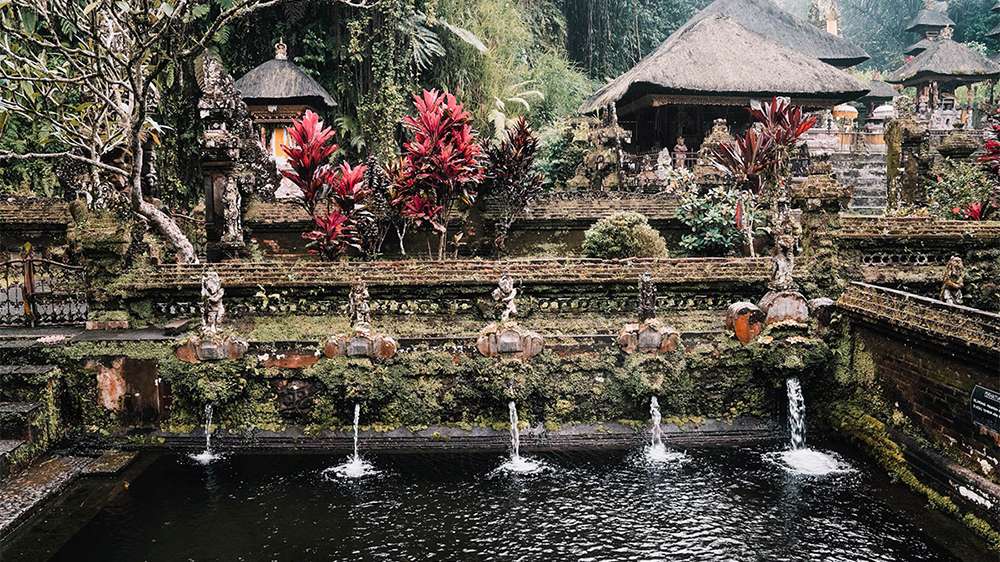
3. Gunung Kawi Temple
One of the oldest temples in Bali, Gunung Kawi lies hidden in a peaceful valley just 20 minutes from Ubud. A long staircase leads down to the complex, where you’ll find towering rock-cut shrines carved into the cliffs over 1,000 years ago.
- Entrance fee: IDR 30k
- Dress code: Sarong required (available on-site)
- Tip: The walk down passes beautiful rice terraces, so wear comfy shoes
Gunung Kawi feels ancient and serene. It’s less about grandeur and more about atmosphere, with a sense of reverence woven into the jungle setting.
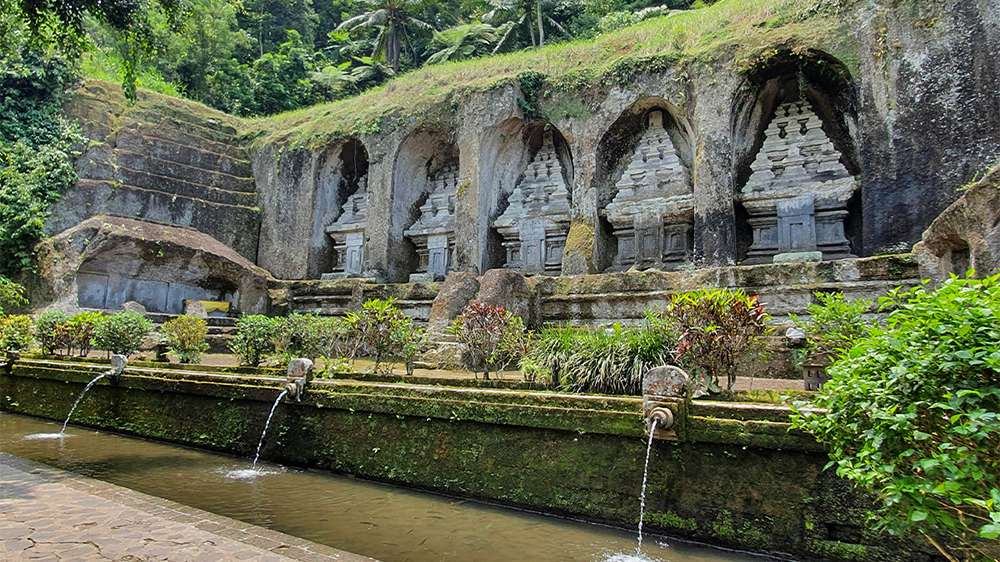
4. Saraswati Temple (Ubud Water Palace)
Right in the heart of Ubud, Saraswati Temple is a tribute to the goddess of knowledge and art. The lotus pond in front makes it one of the most photographed temples in town, especially at sunset.
- Entrance fee: IDR 60k (includes ceremonial dress)
- Pro tip: Want the view without the fee? Head to Café Lotus next door and enjoy the view with a coffee
This temple is small but lovely, especially if you’re walking through central Ubud. You can admire the architecture, take in the peaceful vibes, and catch a dance performance in the evening.
5. Pura Dalem Agung Padangtegal (Monkey Forest Temple)
Tucked inside Ubud’s Sacred Monkey Forest, Pura Dalem Agung is dedicated to Shiva, the destroyer deity in Balinese Hinduism. Its moss-covered stone carvings and jungle backdrop give it an ancient, mysterious vibe.
- Location: Inside the Monkey Forest (entrance: IDR 100k–120k)
- What to expect: Peaceful temple courtyard, overgrown banyan trees, curious monkeys nearby
- Note: This temple is still active, ceremonies take place here throughout the year
While most visitors come for the monkeys, the temple itself offers a glimpse into Ubud’s spiritual roots, especially if you visit early when it’s quiet.
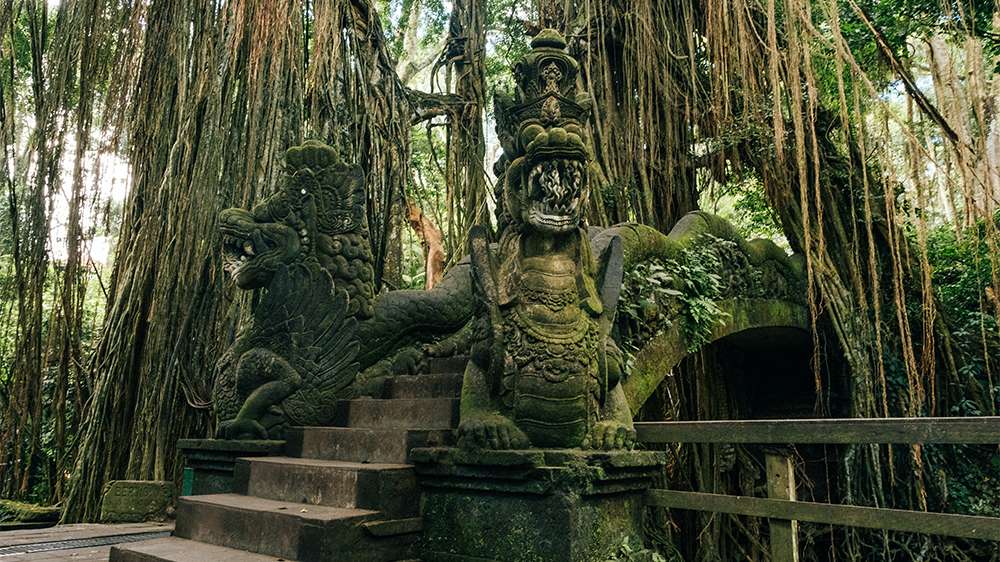
Famous Sea Temples of Bali
Bali’s coastline is home to some of the island’s most iconic temples, where crashing waves meet spiritual energy. These sea temples are especially magical at sunset. These are perfect for photos, ceremonies, and soaking in the view.
1. Tanah Lot Temple
Sitting on a rocky outcrop in the ocean, Tanah Lot is one of the most photographed temples in Bali. Although visitors can’t enter the temple itself, the setting, surrounded by crashing waves and glowing sunsets, is stunning. The ocean breeze and spiritual atmosphere make it a must-see, especially near Canggu.
- Entrance: IDR 75k
- Best time: Sunset, for golden hour and magical light
- Tip: Stay for the Kecak fire dance nearby, and consider going with a local guide or private driver for a smoother experience
Book a guided tour to Tanah Lot or reach out to @hazbalitourandtravel for custom trips.
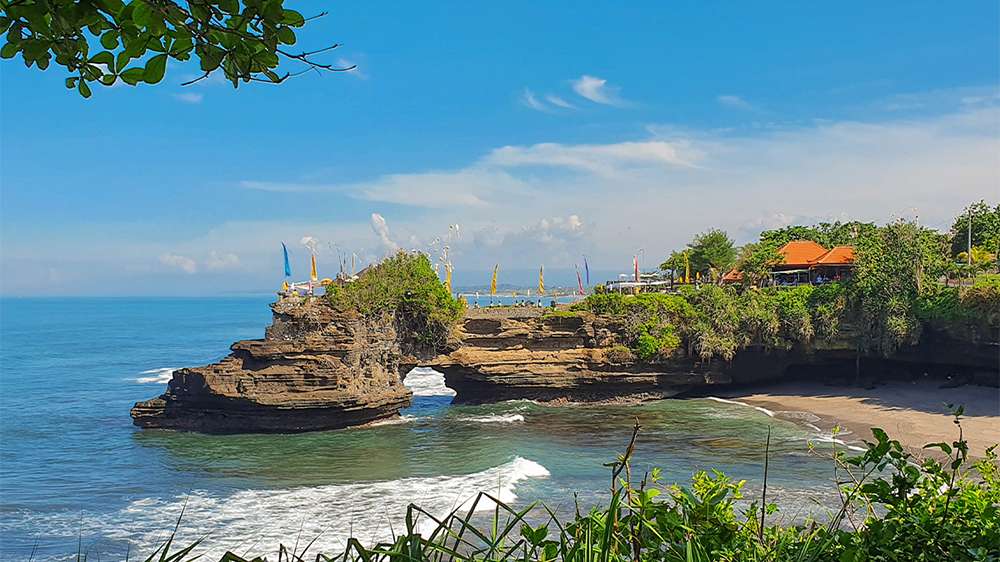
2. Uluwatu Temple
Perched on a 70-metre cliff overlooking the Indian Ocean, Uluwatu Temple is one of Bali’s most scenic and spiritual sites. The views are breathtaking — especially at sunset — and the evening Kecak fire dance adds powerful cultural depth.
- Entrance: IDR 50k (cash only on-site)
- Show time: Around 6 PM, arrive early for a good seat
- Dress code: Sarong required (provided at entrance)
- Note: No drones allowed; keep an eye on your belongings — monkeys are clever here!
We highly recommend visiting in the late afternoon, then staying for the sunset performance. It’s one of Bali’s most atmospheric experiences.
Temples in East Bali
East Bali is home to some of the island’s most spiritually significant and visually striking temples. These sites offer a deeper connection to Balinese Hinduism, and some of the best views in Bali.
1. Besakih Temple (Mother Temple)
Often called the “Mother Temple,” Pura Besakih is the largest and most important temple in Bali. Located on the slopes of Mount Agung, it consists of over 80 individual temples, each with unique ceremonial purposes.
- Entrance: IDR 60k (includes shuttle)
- Dress code: Sarong and sash required (available at the entrance)
- Tip: A local guide can help explain the layout and symbolism
This temple is still actively used by Balinese Hindus for major festivals and prayers. It’s worth visiting for both the cultural insight and the panoramic views of the volcano.
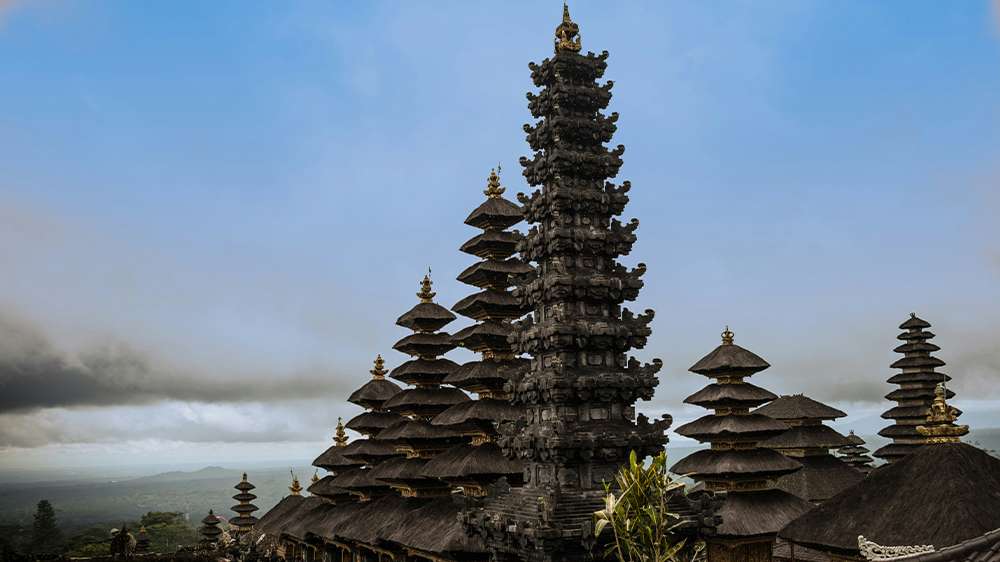
2. Lempuyang Temple (Gates of Heaven)
Perched high on Mount Lempuyang, this temple has become famous for the Gates of Heaven, an iconic split gate that frames Mount Agung in the background. But it’s more than just a photo spot. The full temple complex involves a steep pilgrimage of over 1,700 steps, with several temples along the way.
- Entrance: IDR 55k
- Photo Queue: Expect long waits for the gate photo — early morning is best
- Tip: The views are weather-dependent, so go on a clear day if possible
While the gate draws most of the attention, the setting is peaceful, and the climb can be a rewarding spiritual journey in itself.

Iconic Temples in North Bali
North Bali is quieter and less visited, but it’s home to some of the island’s most unique and serene temples. These spiritual sites pair peaceful surroundings with incredible architecture.
1. Ulun Danu Beratan Temple
Floating gracefully on Lake Beratan, this is one of Bali’s most photographed temples, and for good reason. Ulun Danu Beratan is dedicated to Dewi Danu, the goddess of lakes and rivers, and appears to float on the water when lake levels are high.
- Entrance: IDR 75k
- Best time: Morning for calm reflections and fewer crowds
- Tip: Pair your visit with a stop at nearby strawberry farms or the botanical gardens
This temple is one of Bali’s most iconic landmarks, offering stunning views and a serene lakeside atmosphere.
2. Brahmavihara-Arama Buddhist Monastery
Often overlooked, Brahmavihara-Arama is Bali’s largest Buddhist monastery, located near Banjar in North Bali. The peaceful hilltop complex includes meditation rooms, gardens, and a small replica of Borobudur.
- Entrance: Donation-based (around IDR 20k is appreciated)
- Dress code: Modest clothing required (sarongs provided)
- Tip: Combine your visit with a stop at nearby Banjar Hot Springs
With golden Buddha statues and sweeping views, it’s a peaceful retreat that reflects Bali’s spiritual diversity beyond Hinduism.
Suggested Temple Routes
Exploring temples in Bali doesn’t need to feel overwhelming. Here are a few route ideas to help you group nearby sites into easy day trips, whether you’re chasing views, seeking spiritual moments, or planning a cultural deep dive.
1. Ubud Cultural Circuit
Spend your day exploring Ubud’s most beautiful temples: Goa Gajah, Gunung Kawi, and Tirta Empul, all located just outside town. Then return to the centre to visit Saraswati Temple and end the day at the Monkey Forest Temple. This is a perfect route to combine with a relaxing lunch or spa break.
2. North Bali Temples & Waterfalls
Start the morning at Brahmavihara-Arama, Bali’s largest Buddhist monastery. Then head to the scenic Ulun Danu Beratan Temple on Lake Beratan. Along the way, visit a few nearby waterfalls like Banyumala Twin Waterfalls or Gitgit for a full day of nature and culture.
Want to explore more waterfalls? Check out our Bali Waterfalls Guide.
3. East Bali Highlights
Combine two of Bali’s most important temples in one day: Besakih Temple and Lempuyang Temple. It’s a longer trip but offers dramatic views and a deeper insight into Balinese spirituality. Start early and prepare for some uphill walking.
4. South Bali Scenic Tour
Looking for iconic views and culture by the coast? Visit Tanah Lot Temple in the afternoon and then head south to Uluwatu Temple for sunset and the famous Kecak fire dance. This combo is ideal for those based in Canggu, Seminyak, or Uluwatu.
Final Thoughts on Temples in Bali
Bali’s temples are more than just beautiful places. They’re living, breathing parts of everyday life here. From sacred water rituals in Ubud to dramatic sea temples and quiet monastery gardens in the north, visiting these spiritual sites gives you a deeper connection to the island and its traditions.
Take your time, go with an open heart, and always respect the customs, even if they feel unfamiliar. These moments — barefoot on temple stones, wrapped in a sarong, listening to the sound of gamelan in the distance — are what make Bali truly special.
Planning Your Trip?
Don’t miss our Bali Travel Guide for practical tips, or browse our 3-Week Bali Itinerary to help shape your perfect adventure across the island. Also check out our post on the Best Things to Do in Bali to plan further.
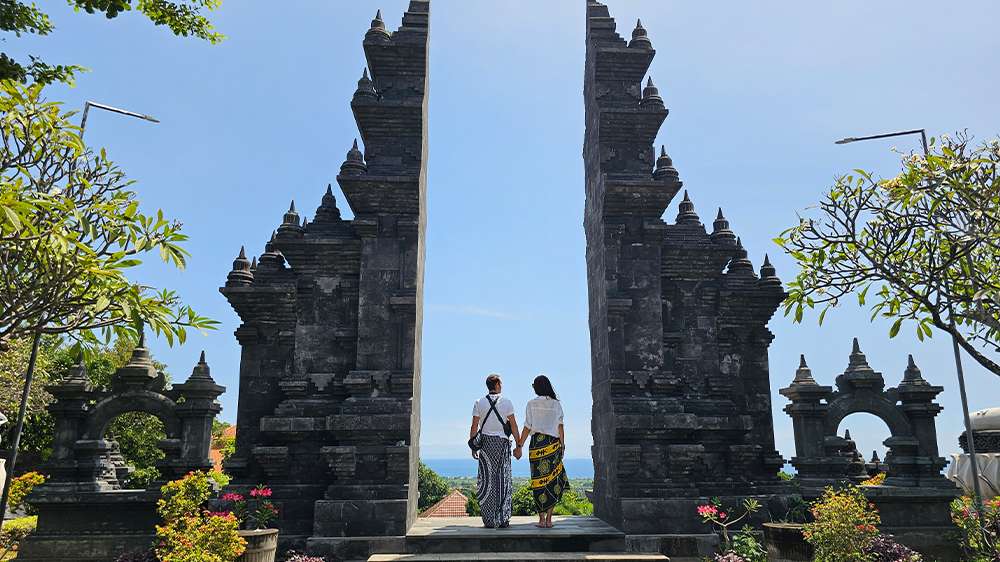
Map of Bali Temples
Get Inspired
Bali, the Island of Gods, is a destination where breathtaking landscapes and vibrant come together. From the cool highlands of Munduk, with its misty waterfalls and green valleys, to the famous rice terraces of Ubud, shaped by generations of farmers, every part of the island has something special to offer.
In Uluwatu, dramatic cliffs frame awe-inspiring sunsets, while sacred temples stand as silent witnesses to time. The beaches of Canggu invite travellers to soak in the laid-back surf culture, and the crystal-clear waters of Nusa Lembongan and Nusa Penida reveal a paradise beneath the waves.
If you’re planning your trip, our 3-week Bali itinerary has the best spots and experiences covered. Join us as we explore this island’s wonders, where nature, tradition, and adventure come together in perfect harmony!
Looking to explore even more? Our 3-week Indonesia itinerary takes you through the country’s most incredible destinations.

